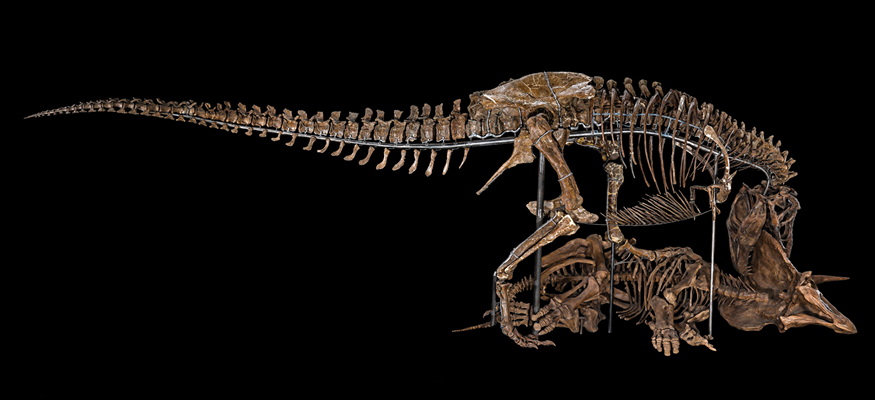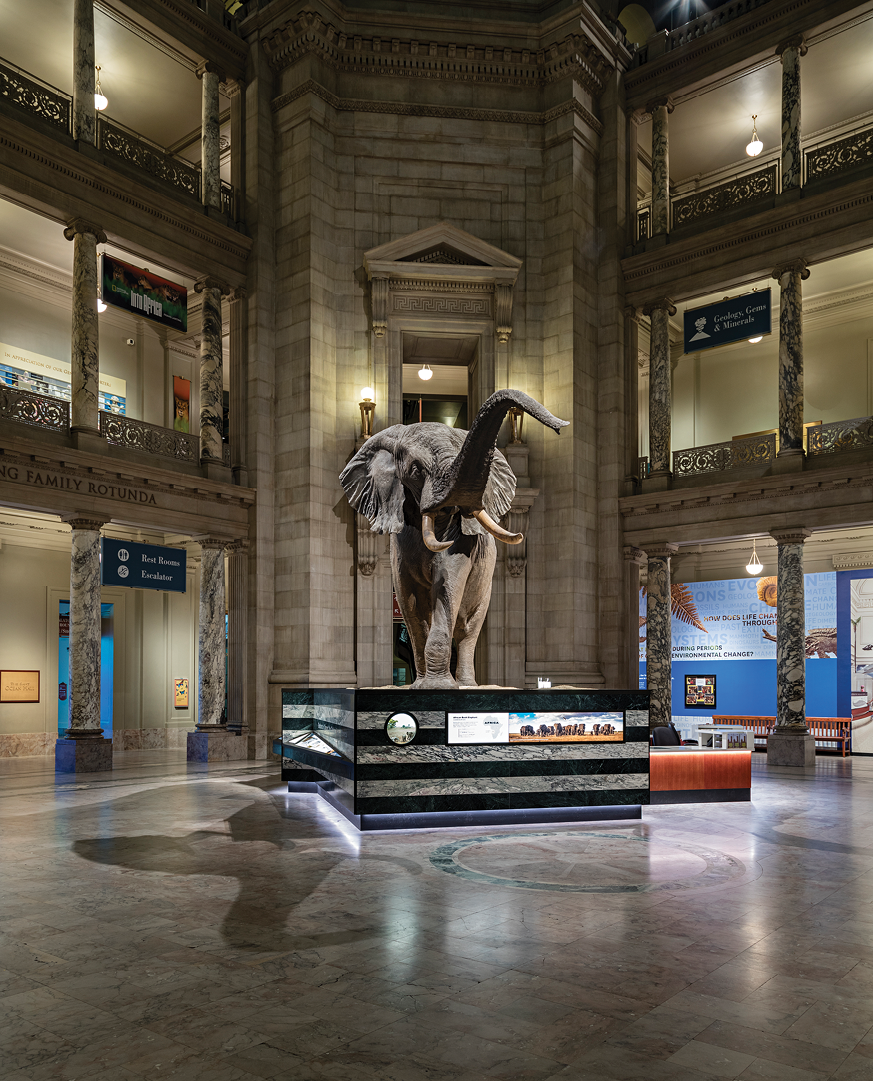- Home
- Media Kit
- Current Issue
- Past Issues
- Ad Specs-Submission
- Ad Print Settings
- Reprints (PDF)
- Photo Specifications (PDF)
- Contact Us

![]()
ONLINE

Inspiring Positive Change
Editors’ Note
Dr. Kirk Johnson is the Sant Director of the Smithsonian National Museum of Natural History where he oversees a collection of more than 146 million objects –the largest natural history collection in the world. Each year, the Museum hosts more than 5 million visitors and its scientists publish more than 750 scientific research papers and describe more than 300 new species. In 2017, the Museum completed a $225 million capital campaign and in 2019 it opened the $40 million "David H. Koch Hall of Fossils — Deep Time." Before he came to the Smithsonian in 2012, Johnson was the vice president, chief curator and paleobotanist at the Denver Museum of Nature & Science where he led expeditions in 11 countries that resulted in the discovery of more than 1,400 fossil sites. His research focuses on fossil plants and the extinction of the dinosaurs and he is known for his scientific articles, popular books, museum exhibitions, documentaries, and collaborations with artists. In 2011, he led the excavation of an ice age site near Snowmass Village, Colorado, that recovered more than 5,400 bones of mammoths, mastodons and other ice age animals and was featured in the NOVA documentary, Ice Age Death Trap (2012). His recent PBS documentaries include Making North America (2015), The Great Yellowstone Thaw (2017), and Polar Extremes (2019). His recent books include, Cruisin’ the Fossil Coastline: The Travels of an Artist and a Scientist along the Shores of the Prehistoric Pacific (2018) and Visions of Lost Worlds, the Paleoart of Jay Matternes (2019). His upcoming book, Trees are made of Gas, The Story of Carbon and Climate, will be published in 2020.
Institution Brief
The Smithsonian Institution (si.edu) is the world’s largest museum, education, and research complex, with 19 museums and the National Zoo, shaping the future by preserving our heritage, discovering new knowledge, and sharing our resources with the world. The Institution was founded in 1846 with funds from the Englishman James Smithson (1765–1829) according to his wishes “under the name of the Smithsonian Institution, an establishment for the increase and diffusion of knowledge.”
The National Museum of Natural History (si.edu/unit/natural-history-museum) is dedicated to maintaining and preserving the world’s most extensive collection of natural history specimens and human artifacts. It fosters significant scientific research and produces educational programs and exhibitions that present the work of its scientists to the public. Museum research addresses current topics such as biological diversity, global climate change, molecular systematics for enhancing the understanding of the relationship between living things, ecosystem modeling, and the documentation and preservation of human cultural heritages.

A display at "The David H. Koch Hall of Fossils – Deep Time" exhibit
Will you provide an overview of the Smithsonian National Museum of Natural History?
The Smithsonian National Museum of Natural History is, by many measures, the world’s largest natural history museum. We are at once an active research institute and an informal science education center that serves millions of people every year online and at the museum.
Our mission is to promote understanding of the natural world and our place in it. The museum’s 146 million object collection tells the history of the planet and is a record of human interaction with the environment and one another. As we all work to shape a sustainable world, this record becomes the starting point. It is our guidebook to how the future can look and work.
Because of the boundless curiosity of our researchers, the breadth and depth of our scientific collections, and our ability to inspire future generations of scientists, we have a vital role to play. Here people can both discover the world and learn to become better stewards of it.
How do you define resilience and how is resilience incorporated into the culture of the Smithsonian National Museum of Natural History?
Resilience is being nimble and creative in the face of relentless change. We see this in so many ways at the museum, whether it is our researchers working to challenge a scientific hypothesis or our museum educators finding ways to break through the noise and inspire the next generation of scientists in the face of a concerted effort to question the legitimacy of science and the scientific process.
I am immensely proud of the resilience displayed by our museum staff during the COVID-19 pandemic. Our doors have been closed since March 14, and yet the entire team has continued to do their work on behalf of the American people – some coming in to care for our building and collections, others making the museum accessible to a digital audience by building out a suite of online offerings that didn’t exist before, and still others continuing the pursuit of knowledge through their research.

Kenneth E. Behring Family Rotunda featuring
the Fénykövi Elephant
How are you using the unique platform of the Smithsonian to educate people about resilience?
We are living in unique and challenging times. At this moment of political polarization, we are in a global pandemic and we are witnessing our nation come to terms with the societal imbalance that has sprung from its history of racism and oppression. Over the last several decades, we have become increasingly aware of the negative impacts of climate change, pollution, habitat destruction, invasive species, human overpopulation, and overharvesting by hunting and fishing.
Our museum, and the broader Smithsonian, is uniquely situated to engage and inspire our visitors, online and in person, that positive change is possible in all of these areas. Our exhibition, “Outbreak, Epidemics in a Connected World” opened 18 months before the pandemic started and is now freely shared in more than 140 venues in 40 countries and eight languages. Our exhibition “The David H. Koch Hall of Fossils – Deep Time” displays the entire history of life on Earth and sets the context for understanding the future of humanity and the natural world in the 21st Century. It takes discovery, education, and dialogue to increase and diffuse knowledge and it is our mission to inspire everyone to understand that they can make a difference.
What is the role of science, education and literacy in building resilience?
Science is the tool that humanity uses to grow and perpetuate knowledge. Education and literacy are how we bring each new generation into the growing body of knowledge so that they can carry it forward. It has been science that has greatly accelerated the human endeavor over the last few centuries and it will be science that will meet the challenges of the present century.
How has your personal resilience helped to drive your work?
I am stubbornly optimistic and that helps me take on challenges of all sizes. During my life, I have witnessed breathtaking scientific discoveries and situations where single individuals have driven positive change. I am also a big believer in the power of teams and the ability of small groups of committed people to achieve great things.
Has your work changed as a result of COVID-19 and the anti-racist movement across the U.S. and the world?
Our world has changed substantially in the wake of the pandemic. To protect our visitors, staff, researchers and volunteers and do our part to stem the spread of the virus, the museum has been closed to the public and most personnel since March. Having no visitors onsite has forced us to rethink our role as the National Museum and pushed us to reach into communities across the nation through online offerings that connect kids and adults with our content and our people.
The Black Lives Matter movement has pushed us to rethink about how we are fulfilling our role as the National Museum in a different way. We are an American institution and we want to do a better job ensuring that we are offering an inclusive experience for all of our nation’s citizens. We’re reevaluating our public offerings and outreach efforts in this regard and working with Smithsonian Secretary Lonnie Bunch on how our museum can play a role in the Smithsonian’s larger “Race, Community, and Our Shared Future” initiative. We’re also building out existing internship and postdoctoral fellowship programs at the museum to provide more opportunities to ensure that future generations of scientists in our field are far more representative of our nation’s population than they are today.
Who are some of the resilient leaders you see today?
Secretary Bunch was the founding director of the National Museum of African American History and Culture before becoming the Secretary of the Smithsonian Institution last June. He has led the Smithsonian with its 19 museums and nine research centers through the last six months with remarkable enthusiasm and creativity while at the same time watching over the health and safety of its 6,500 employees.
Dr. Ellen Stofan, former Chief Scientist at NASA, is the director of the National Air and Space Museum where she was in the middle of a complete facility renovation of the mall museum when the pandemic hit. She has continued that work while also leading the Smithsonian’s planning for how it will operate after a COVID-19 vaccine has been created.![]()